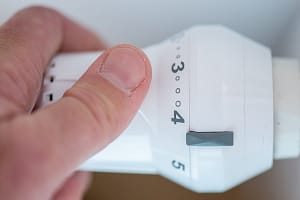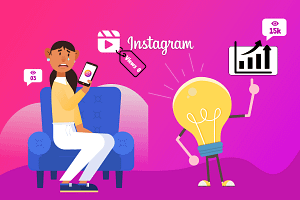Discover the new technologies making your customers’ lives easier
In March 2014 consumers spent £109m on contactless debit and credit cards – an increase of 30% in just three months. Meanwhile the iTunes App Store continued to grow exponentially, hitting 1.14 million app downloads in May – of which 8.4% are for business, 5.3% for utilities and 2.4% for finance.
Add to that the hype surrounding wearable technology (Google Glass, Sony and the Nike Fuelband, for example) and there is a landscape teeming with innovations – or one that Eimear O’Connor, Head of Corporate Mobile Payments at Barclays, describes as “incredibly exciting – with huge potential for consumers and businesses alike”.
Indeed, the methods through which consumers buy products and services are changing dramatically, and these five payment innovations are leading the way.
Mobile commerce (m-commerce)
While m-commerce has been around for some time, the penetration of smart phones into the market – currently around 70% – has boosted projected figures for m-commerce.
However, citing areport by Harris Interactive, O’Connor warns that: “Despite the infiltration of smart phones and tablets, 66% of all attempted mobile purchases fail at the point of check out.” The challenge now, she says, is for businesses “to fully optimise their mobile site so that the process from search through to select and then to payment is as easy as possible.”
“Businesses can do this by using as much of the stored customer’s information as possible, so that consumers aren’t required to input delivery address or card details every time they make a payment.”
Barclays Pingit

Barclays Pingit has already disrupted the market for peer-to-peer transactions, and now it’s set to do the same for consumer-to-business transactions. Free to download and use, the app enables consumers to quickly pay for products using their mobile phone, and they don’t have to bank with Barclays to use it.
Barclays Pingit ‘mobile checkout’ facilitates quick and easy purchases from a mobile website or app checkout page. Utility companies such as Severn Trent Water now use Barclays Pingit to help their customers pay their utility bill. Customers receive a bill, scan the Quick Response code (QR code) using the Pingit app, and the payment is made.
“The evolution of Pingit is to help consumers pay for goods, products and services in different environments,” explains Milon Veasey, Head of Mobile Solutions at Barclays. The app’s ‘buy it’ feature does exactly that, allowing consumers to make purchases by scanning an advert or poster.
“From a business point of view, it’s creating a new sales channel,” says O’Connor. “It takes traditional printed media and incorporates QR codes so that customers can buy straight off the poster. This didn’t exist before, and that’s what our clients are getting really excited about.”
Contactless cards
London is driving growth in this area, with the penetration of active contactless card users in the capital more than double that of any other region. “The capability to support contactless payment has got enough of a market share that it’s really driven the enablement of using a contactless card in a variety of places,” says Veasey. “Quick service merchants have been early pioneers – Starbucks, Pret a Manger, McDonald’s, for example – and for fast-service businesses it’s proving an invaluable development.”
For example, since the introduction of contactless, less than 1% of London bus journeys are made using cash, and from 6 July, you will no longer be able to use cash for your fare in the capital. And with Transport for London adopting contactless payments and other major bus companies such as Arriva and Go-Ahead adopting electronic options such as Pingit, Barclays is at the forefront of this payment innovation.
NFC on smartphones
As contactless technology develops and becomes more widespread, it seems only a matter of time before consumers will start making more purchases using phones instead of cards. The technology behind this is known as near field communication (NFC). For example, Google Wallet launched at the end of last year, and the iPhone 6 is tipped to include NFC technology to facilitate contactless mobile payments.
The exciting thing for retailers, says O’Connor, is that “once they’re enabled to accept card-based contactless payments, there’s no reason why that underlying infrastructure needs to change to accept it from a mobile phone”. As well as making payments, O’Connor expects retailers and phone manufacturers to use the NFC signal to apply vouchers and loyalty points too.
Veasey agrees that momentum for NFC is building. “There has been lots of back and forth about the ownership around NFC, how to manage the security and so on, but that’s evolving fast now. With the participation of handset manufacturers, we’re expecting large growth over the next two to three years in this space. It’s an exciting time.”
Wearable technology
Veasey describes the current landscape for alternative payments as “more exciting than we can ever remember”. The recent advances in wearable technology are testament to this. “In the UK we’ve never had this much activity around alternative payments. On a global basis there have been lots of initiatives, but in the UK we now have so many opportunities and developments emerging,” he says.
The role of social media, and the increasing affinity that people have for transacting with brands they know, is giving way to significant shifts in how new younger generations pay for products.
Wearable technology, such as wristbands, is brilliant for younger users who are more confident with this kind of technology. Especially in this era of festivals and big events, consumers can turn up and there’s no need to carry a wallet – they just have their wristband. For example, bPay from Barclaycard is a pre-paid account that can be linked to a wearable band that allows fast, secure contactless payments of up to £20 for use at festivals and also major retailers. For O’Connor, the burgeoning market in wearable tech is also very exciting. “Much of it will come down to the individual’s expectation on how the wearables will look,” like she says. “Will it be function or fashion-led? Imagine Google Glasses by Dior – the potential is staggering!”
**
The way that people pay is changing. As customers choose to use new payment methods, the businesses that gain competitive edge will be those who can offer the technologies that make payments easier, safer and quicker. And these technologies
offer new possibilities for businesses looking to grow. As new innovations gain popularity, businesses should consider how they can best leverage the new capabilities in order to stay current and offer their customers the best payment experience.
How will you cash in on the cashless revolution?
This article is brought to you in partnership with Barclays
NOW READ: This is what your future high street will look like








Leave a Comment